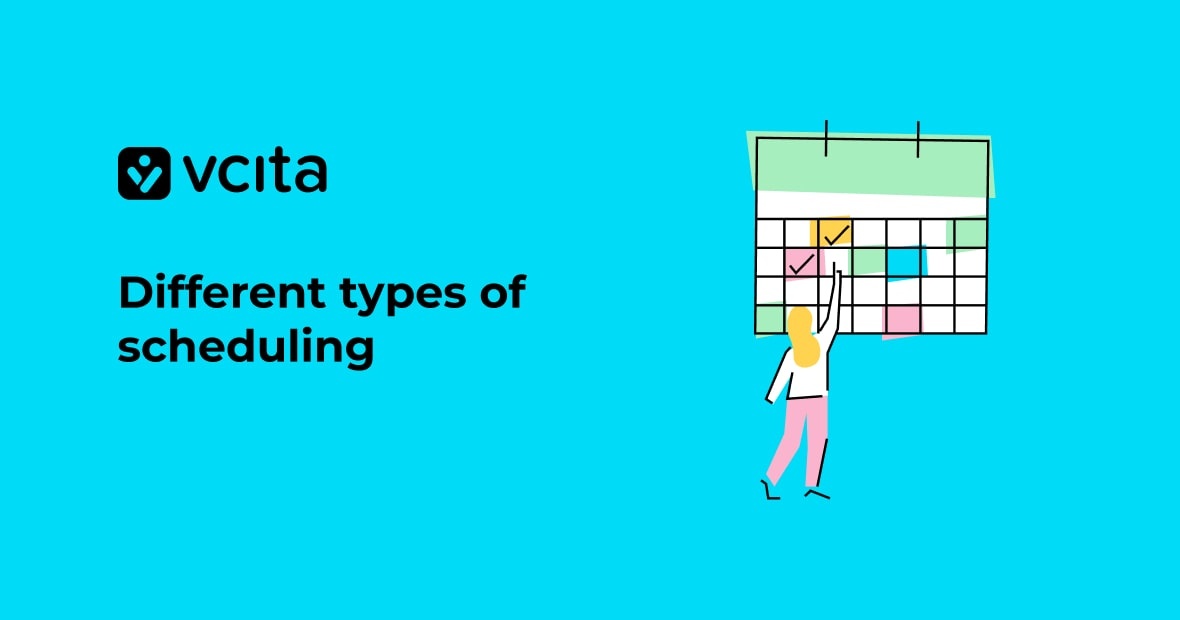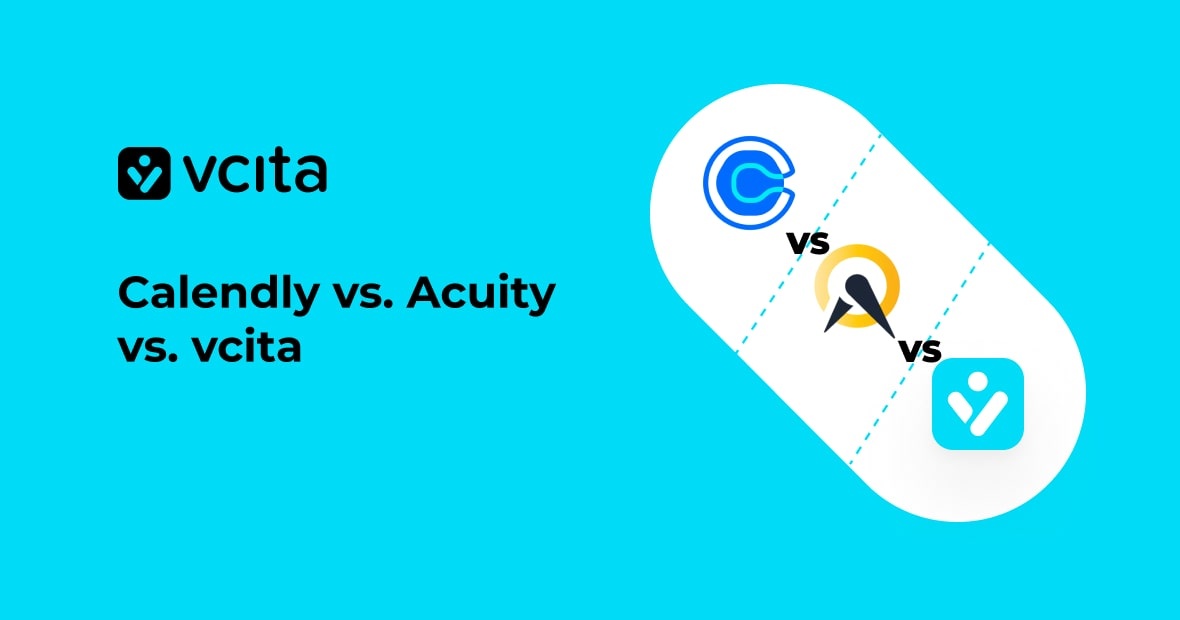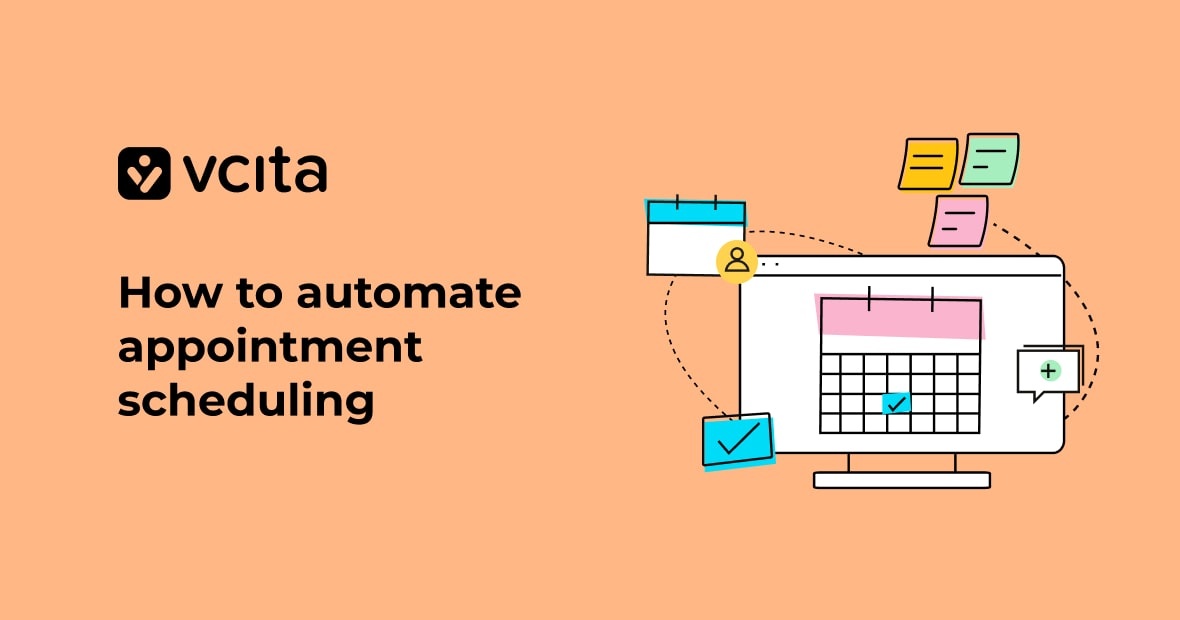Do you run a business? If so, you know how important scheduling is. It can make or break the quality, efficiency, and satisfaction of your customers and staff alike.
Choosing the right type of appointment scheduling software depends on a few factors, including the sector you operate in and your clients’ or patients’ needs.
In this article, we’ll help you find the best scheduling solution for your service or business. We’ll talk about some of the most common methods and how they work to help you make the best choice.
Wave scheduling
If your business is on the larger side or you have enough staff to deal with multiple customers simultaneously, then wave scheduling could be for you. Wave scheduling is a method of bringing several customers in at the same time to see different staff members. For example, a business may schedule four clients at 9:00 AM but assign them to different members of your team.
Advantages:
- Customers wait less if they are early or on time.
- Businesses are often capable of seeing more customers throughout the day.
- Businesses can group customers based on their needs.
Disadvantages:
- Scheduling can be hard to manage, at times. It requires planning, coordination, and communication.
- Staff may feel rushed to get through appointments to avoid a huge backlog.
Modified wave scheduling
If wave scheduling doesn’t quite cut it for you then modified wave scheduling might be the way forward. It is a method of grouping customers into a “wave” and scheduling their appointments for a specific time slot. Unlike regular wave scheduling, customers receive service one after the other. This means that some customers will have to wait to be seen. This is often useful if a business needs to schedule appointments in bulk but doesn’t have the staff to deal with more than one customer at a time. For example, a doctor who only sees patients once a week might ask two or three patients to come in at 10 AM and then have five single appointments every ten minutes for the rest of the hour.
Advantages:
- Customers wait less if they are early or on time.
- Scheduling can be more flexible. Appointments that overrun can often be offset with shorter appointments.
Disadvantages:
- Scheduling is harder to manage at busy times and customers with complicated needs may feel like they are being rushed.
- Customers may have to wait beyond their time slot at busy times.
Double-booking scheduling
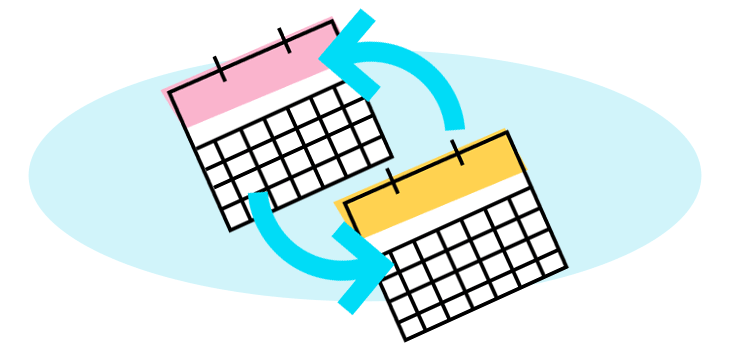
Double-booking scheduling is a risky type of scheduling that gives more than one customer the same appointment time. This type of scheduling can be useful for businesses where staff can see more than one client at a time. For example, a dentist may see two patients at 10:00 AM, one for a check-up and one for a filling.
Advantages:
- Businesses can make more money as they deal with multiple clients at a time.
- Customer flow is often smoother and easier to manage, especially for those that need to see more than one staff member.
Disadvantages:
- The schedule is more uncertain. Customers do not know how long they have to wait to be seen.
- Risk of a drop in customer satisfaction. Clients may feel neglected if they have to wait beyond their allocated time slot.
Cluster appointment scheduling
Does your company have a diverse client base with a variety of needs? Then cluster scheduling might be for you. It is a way of booking customers in groups based on their requirements. For example, a business may schedule customers who want the same specific service at the same time to ensure that the correct staff and resources are available. Take a spa as an example. The spa might cluster all the facial treatment clients for the day at a specific time. This makes it so the professional doesn’t have to switch between equipment for each appointment and can focus on one task at a time.
Advantages:
- It can increase customer satisfaction by allowing clients to get more attention and expertise.
- It lets companies prepare and perform tasks faster when they deal with similar cases in a row.
- It allows businesses to use less resources. They can use equipment, supplies, and staff more efficiently when they serve similar customers together.
Disadvantages:
- Cluster scheduling can make scheduling harder to manage by forcing businesses to group customers.
- More errors. Cluster scheduling can lead to customers being placed in the wrong group and their needs not being met.
- Limited scheduling. As cluster scheduling groups appointments based on certain criteria, businesses may limit the availability of appointments for customers.
Stream scheduling
Do your customers require fixed appointments that are set out in advance? Then stream scheduling could be the way forward. Also known as time-specific scheduling, it is a method of giving customers an exact time slot to see a specific member of staff. For example, your clients can schedule their haircut for 11:30 AM. Since you know that it won’t take longer than 30 minutes from start to finish, you can offer another time slot, i.e., availability for another client, at 12 PM.
Advantages:
- Customers and staff know their schedules and can plan ahead.
- It allows customers to get more personalization. They can pick a time slot and provider.
- It can lead to better customer satisfaction when they are given a specific time slot… so long as it is met.
Disadvantages:
- Missed appointments can leave gaps (and a loss of revenue) in diaries.
- Businesses may not be able to handle urgent cases, and customers may have to wait beyond their appointment time.
Open appointment scheduling
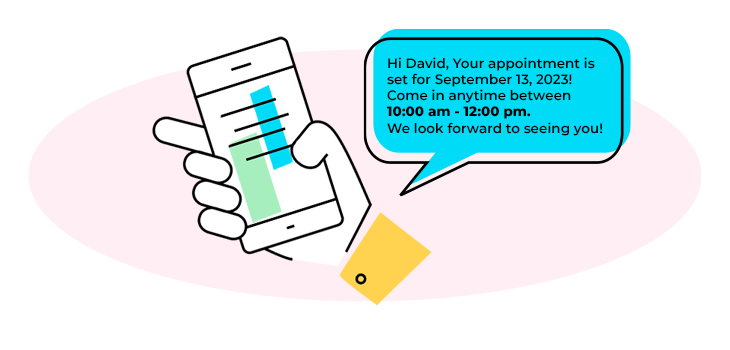
Open appointment scheduling might be a good choice if your customers are looking for flexibility in their visits. In this method, you don’t use time blocking i.e., you don’t assign a specific time slot for each customer, but rather allow them to come in during a certain time range. For example, a business might tell a customer to “come in between 10:00 AM and 12:00 PM.”.
Advantages:
- Fewer no-shows – with more flexibility, customers are less likely to miss their appointments.
- Resource management is easier. As clients are frequently scheduled based on their needs, businesses can plan and allocate equipment and staff easier.
Disadvantages:
- Customers might not know how long they will have to wait. They may feel frustrated if the wait to be seen is long.
- Issues with customer flow can occur if a lot of customers show up at the same time.
Matrix scheduling
Matrix scheduling is a complicated method of organizing appointments based on two or more criteria, such as time, resources, or priority. For example, you can use a scheduling matrix to match customers with different service providers based on who is free and who is good at what.
Advantages:
- Scheduling is simple if the right tools are used. Businesses can use tools like Excel to make sure the correct criteria are met.
- Resource management is often easier. As customers are sorted due to their needs, businesses can plan and allocate equipment and staff easier.
- Errors are lower. As customers are grouped based on specific criteria, it is less likely for them to receive the incorrect care or attention.
Disadvantages:
- Coordinating schedules might be challenging without the right online scheduling software and back-and-forth communication with team members.
- Less flexibility. Customer needs are often more complicated with matrix scheduling and making sure resources are available is difficult.
40/20 scheduling
40/20 scheduling may be a good solution if your customers need to see more than one professional or access multiple services during one visit. The client will often see the first staff member on the hour, the second one after 20 minutes, and the third one (if necessary) after 40 minutes. For example, let’s assume that a company requires each new staff member to come into work with a health certificate from an occupational medicine facility. Upon entering the clinic, they might have to see three or four specialists within the hour. The first ten minutes might be spent with the nurse, followed by fifteen minutes with an eye doctor, etc.
Advantages:
- Better quality of service. Customers can get more attention and expertise from different staff members.
- More efficiency. 40/20 scheduling can allow your team to work better when dealing with similar cases in a row.
Disadvantages:
- More complexity. Scheduling is often harder to manage as businesses juggle multiple appointments for each customer.
- Risk of conflict and disorganization. As customers move from one service/staff member to the next, overruns can have a knock-on effect.
Walk-in appointment scheduling
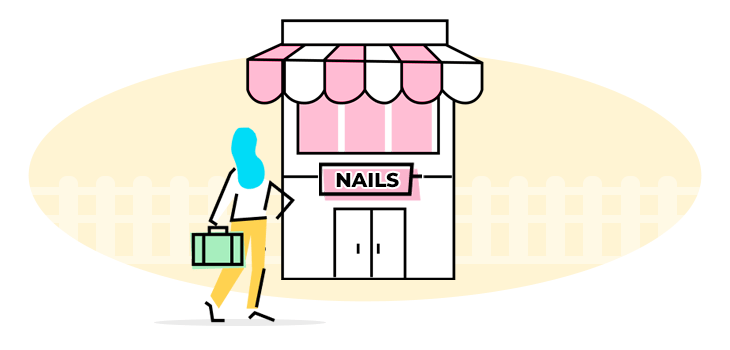
Do your customers hate booking appointments in advance? Do they prefer to show up whenever they feel like it? If so, consider walk-in appointment scheduling. It’s a way of scheduling that lets customers visit a service without making an appointment beforehand. They can just walk in and wait for their turn. This is quite popular, for instance, among beauty salons, where clients can come in for a manicure appointment without scheduling their visit.
Advantages:
- More freedom. Customers can visit the business when they want, without planning ahead or committing to a time slot. They can also change their mind or cancel without any trouble.
- More simplicity of scheduling. The business does not have to create or update a schedule. They can also avoid errors or mistakes when booking appointments.
Disadvantages:
- Increased uncertainty. Customers don’t know how long they will have to wait for their turn and may grow frustrated. At the same time, staff can’t predict how many customers they will see during their shift and may feel overwhelmed if they have to see too many clients at once.
- Issues with customer flow can occur if a lot of customers show up at the same time. Worse yet, clients may get overlooked when things get busy.
Which type of appointment scheduling is the best overall?
Scheduling is a big deal for any business. It has the potential to either enhance or diminish the quality of your service. Unfortunately, there is no one-size-fits-all solution. What works best for your company will depend on both your and your clients’ needs, as well as the sector you work in. Here are some things you should remember when deciding on the scheduling method:
- What you do and how big you are: Certain approaches might prove more effective for larger businesses that have diverse teams with a range of skills. Conversely, smaller businesses may lean towards a simpler, personalized scheduling system. Also, consider your industry requirements – if you operate in healthcare, for instance, then you’ll need to choose HIPAA compliant scheduling software.
- What your clients want and need: Some methods will work for some customers but not for others. It’s often best to ask what your clients expect before implementing any scheduling system.
- How available and efficient your staff is: Certain solutions work better when your team is skilled, well-prepared, and in sync. On the flip side, if some team members lack the necessary skills or resources, they might find it tough to handle a flexible or demanding scheduling system.
Choose a type of appointment scheduling solution that best fits the needs of your business and your clients. If you’re currently on the lookout for an appointment scheduling app, then be sure to check out vcita.
























